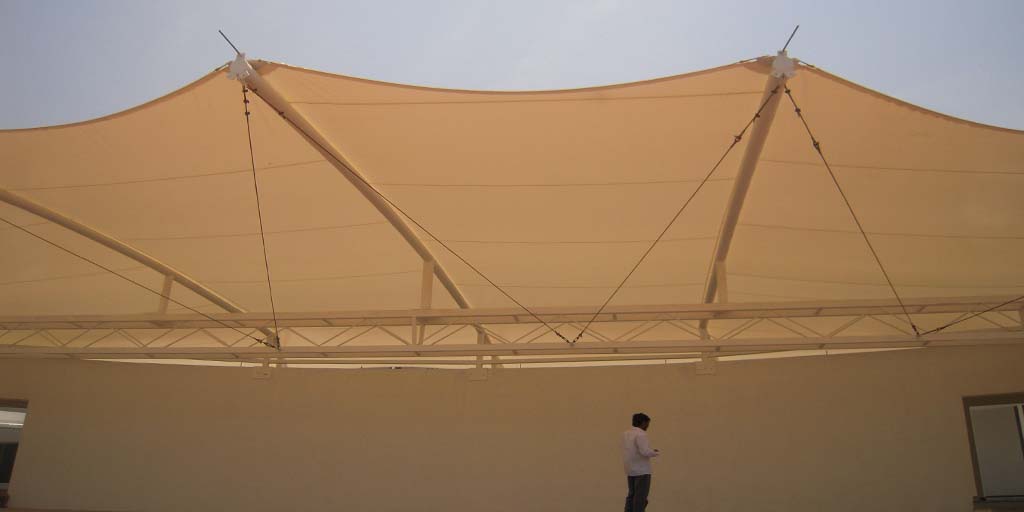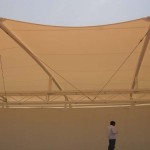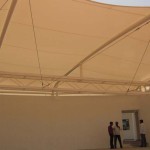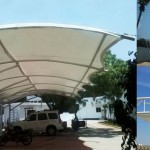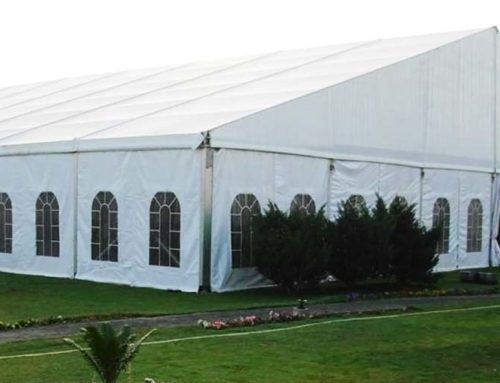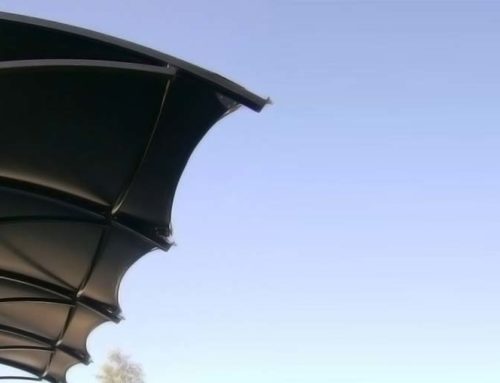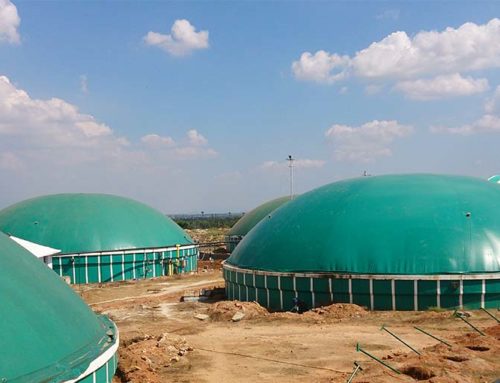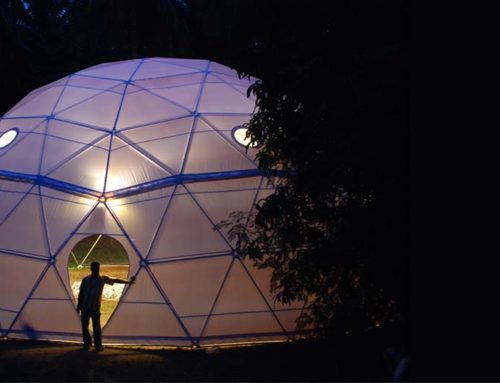- Tensile
- Tensile
- Tensile
Textile architecture puts to use membranes that are efficient, supple, light, resistant, waterproof, opaque and translucent. Textile structures can be found in a wide variety of architectural forms and are used to create unique and dynamic environments.
The use of double curvature is a basic principle in tensile fabric architecture allowing for a stable and balanced structure. Well designed textile structures will resist any type of climate. The tensioned surface, the main structural element, allows for large-span column-free designs resulting in a reduction in the quantity of structure required in a project.
Textile structures are used in a wide range of architectural applications including performance art venues, stage and bleacher covers and amphitheatre canopies, exhibition halls, circus tents, sports venues, commercial and industrial buildings, shade structures for schools, parcs and playgrounds, covered walkways and breezeways, terrace covers, sculptural elements, vertical partitions, building shades and stretch ceilings.
